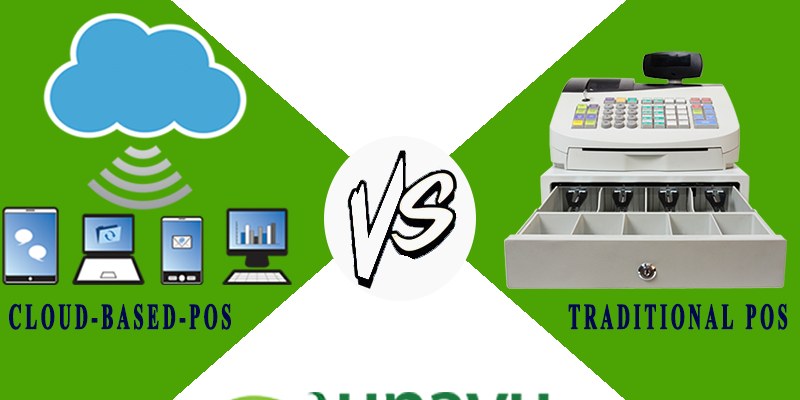A POS system for a restaurant is the lifeline of its operations. But choosing a POS system can quickly become overwhelming. Which type of system you should choose? What is a cloud based point of sale system and how it is different from a traditional point of sale system? Cloud based POS systems are becoming more and more popular across the world in restaurants, hospitality, retail, medical and other centers. It’s important to understand the difference between cloud based POS system and Traditional POS systems to determine which one makes the most sense for your business.
Cloud Based POS System Vs Traditional POS System
Unlike traditional POS systems cloud based POS systems can be accessed directly through the Internet, mobile devices, smart phones, tablets, laptops, etc. This allows you to manage many aspects of your business like sales, labor, and inventory management without actually being at a location. Owners/Managers have access to the various reports in real time rather than having to wait till the end of the day or ask for reports from the staff present at the outlets.
Cloud based systems store information online, which allows them to easily integrate with other systems like material & recipe management, online ordering website, payroll, CRM, loyalty programs, and email/SMS marketing. Traditionally somebody at the restaurant have to manually transfer the appropriate information from the POS to other systems in order to keep track of business. Many traditional POS systems are connected to the server usually in the backroom of the premises. This type of setup is very costly and can lead into serious security issues ranging from hacking and theft to damage from fire, and other dangers.
Cloud based POS systems maintain highly secure connections to the cloud with multiple levels of encryption and backups, ensuring that if something catastrophic were to happen your data is safe & secure and easily retrieved. Speaking of security, Tablet based POS systems are even more secure in the sense that sensitive information like credit card data is actually never saved on the device. So if tablet is ever stolen or damaged there’s nothing to worry about, as there is no sensitive data stored encrypted on the devices themselves.
Many cloud based POS systems also support mobile terminals in the form of tablets/touch screen monitors, etc. Tablets allow for quick and easy order taking and higher turn-around times, which can lead to increased sales. With these multiple mobile/tablet ordering systems, some restaurants have seen tables’ turn-around times to improve by up to 25%. Because a server spends more time with guests and less time in sending and modifying orders to the kitchen.
These are just a few differences between a cloud based and traditional POS systems. The best POS system is affordable and easy to use, and should also do more than just accept payments and process sales. It should come with additional time-saving features such as inventory management, staff management, marketing tools, customer data gathering, task automation and other capabilities that make it easier to run and grow your business. The vendor should also provide dedicated solutions for your type of business and offer 24/7 customer support.
Here are a few criteria that can be looked at to evaluate a complete POS system:
• Cost, such as monthly fees or One Time.
• Ease of setup and use.
• Hardware, such as touch screen, desktop, iPad/tablet and smartphone.
• Backend features, such as inventory management, recipe management.
• Built-in solutions, such as customer relationship management (CRM) software, accounting, payroll, etc.
• Industry specific tools, such as online ordering for restaurants.
• Contracts and service terms.
• Merchant services.
• Customization options.
• Third-party integrations.
• Reporting and analytics.
• Service limitations.
• Customer service.



